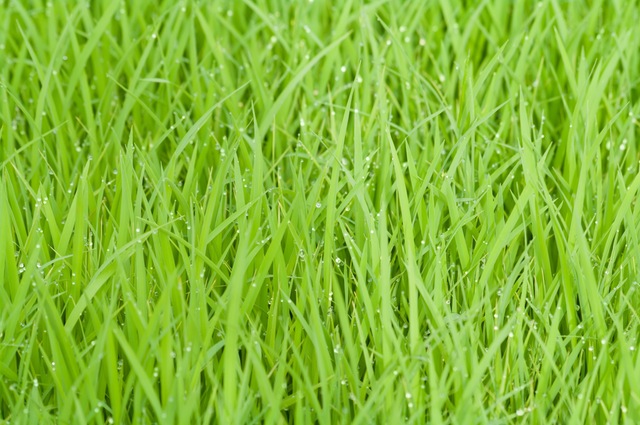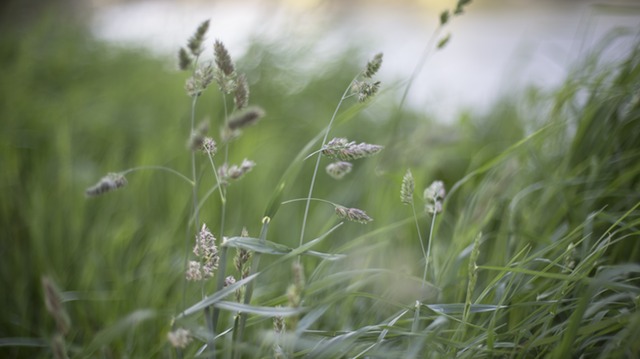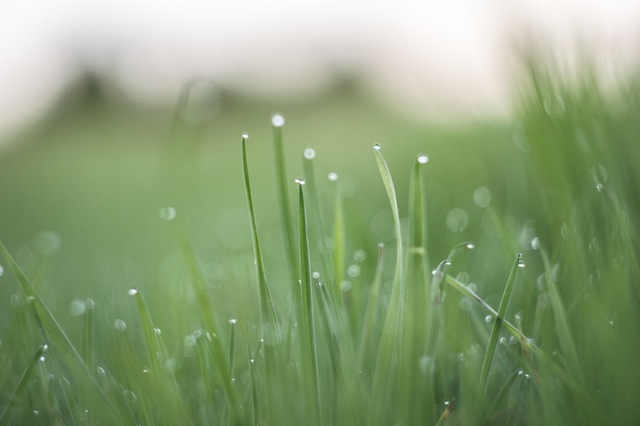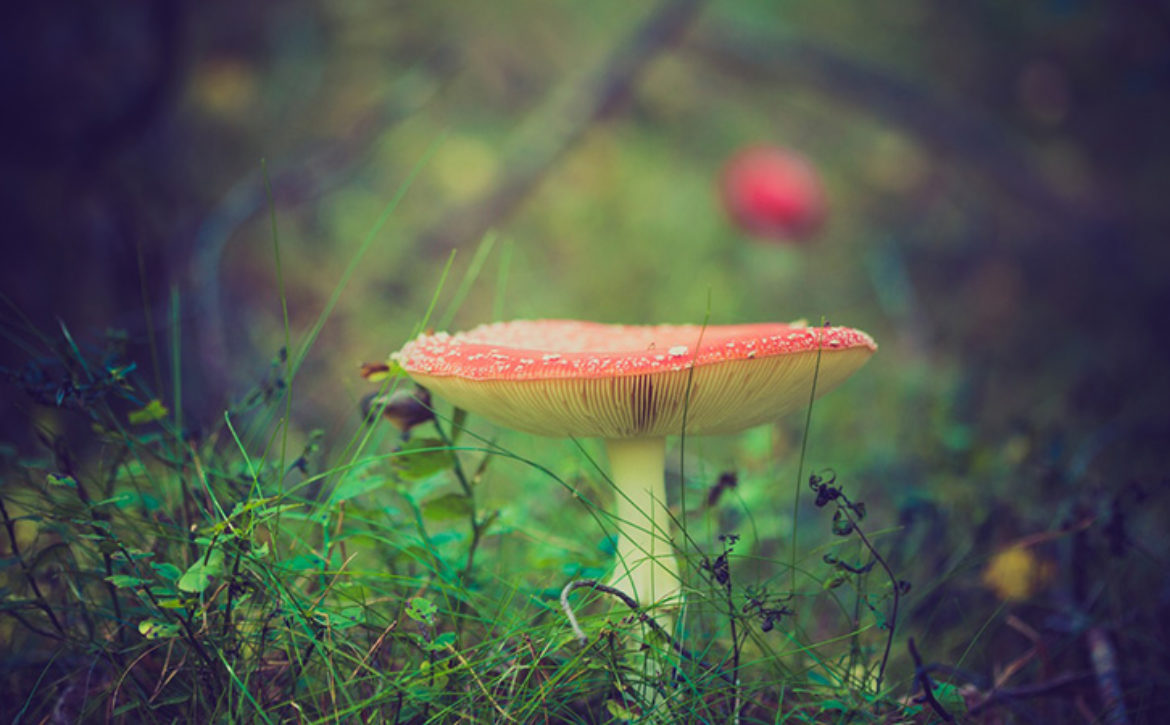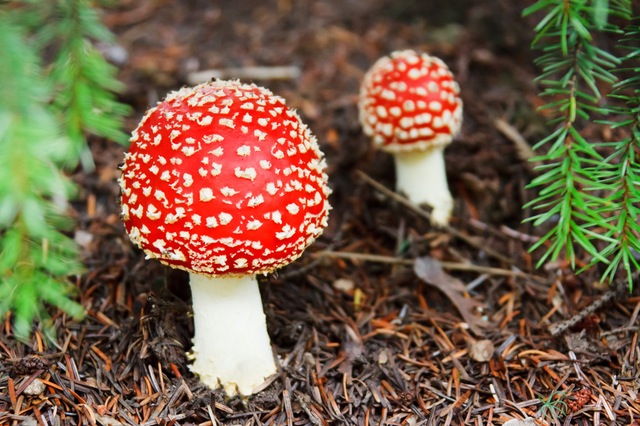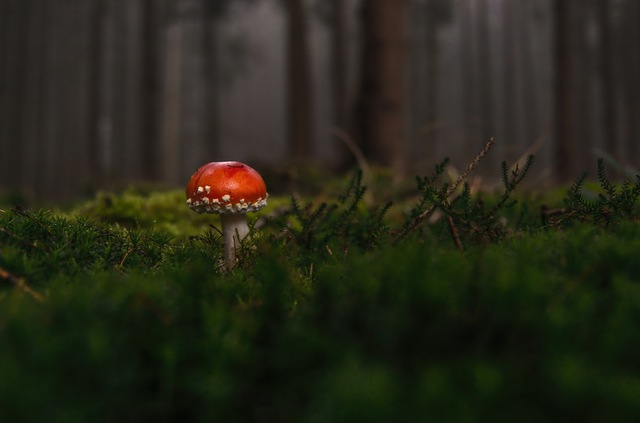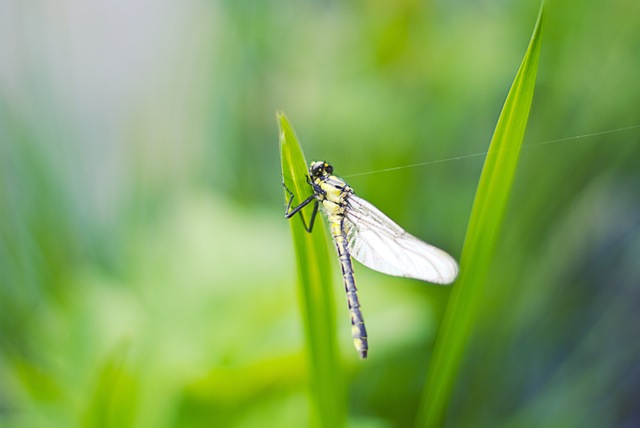Parts of a Spikelet
The Poaceae (English pronunciation: /poʊˈeɪ.siˌiː/) or Gramineae are the large and nearly ubiquitous family of monocotyledonous flowering plants known as grasses. The Poaceae include the cereal grasses, bamboos and the grasses of natural grassland and cultivated lawns (turf) and pasture. Grasses have stems that are hollow except at the nodes and narrow alternate leaves borne in two ranks. The lower part of each leaf encloses the stem, forming a leaf-sheath. With around 12,000 species, the Poaceae are the fifth-largest plant family, following the Asteraceae, Orchidaceae, Fabaceae and Rubiaceae.
Grasslands such as savannah and prairie where grasses are dominant are estimated to constitute 20% of the vegetation cover of the Earth[citation needed]. Grasses are also an important part of the vegetation in many other habitats, including wetlands, forests and tundra. The Poaceae are the most economically important plant family, providing staple foods from domesticated cereal crops such as maize (corn), wheat, rice, barley, and millet as well as forage, building materials (bamboo, thatch, straw) and fuel (ethanol).
Though commonly called “grasses”, seagrasses, rushes, and sedges fall outside this family (see Grass (disambiguation)). The rushes and sedges are related to the Poaceae, being members of the order Poales, but the seagrasses are members of order Alismatales.
- grass
Parts of a spikelet
Flowers of Poaceae are characteristically arranged in spikelets, each having one or more florets. The spikelets are further grouped into panicles or spikes. The part of the spikelet that bears the florets is called the rachilla. A spikelet consists of two (or sometimes fewer) bracts at the base, called glumes, followed by one or more florets. A floret consists of the flower surrounded by two bracts, one external—the lemma—and one internal—the palea. The flowers are usually hermaphroditic—maize being an important exception—and anemophilous or wind-pollinated. The perianth is reduced to two scales, called lodicules, that expand and contract to spread the lemma and palea; these are generally interpreted to be modified sepals. This complex structure can be seen in the image on the right, portraying a wheat (Triticum aestivum) spikelet. The fruit of grasses is a caryopsis, in which the seed coat is fused to the fruit wall. A tiller is a leafy shoot other than the first shoot produced from the seed.
Grass blades grow at the base of the blade and not from elongated stem tips. This low growth point evolved in response to grazing animals and allows grasses to be grazed or mown regularly without severe damage to the plant.
Three general classifications of growth habit present in grasses: bunch-type (also called caespitose), stoloniferous, and rhizomatous.[citation needed] The success of the grasses lies in part in their morphology and growth processes and in part in their physiological diversity. Most of the grasses divide into two physiological groups, using the C3 and C4 photosynthetic pathways for carbon fixation. The C4 grasses have a photosynthetic pathway, linked to specialized Kranz leaf anatomy, which allows for increased water use efficiency, rendering them better adapted to hot, arid environments and those lacking in carbon dioxide.
The C3 grasses are referred to as “cool-season” grasses, while the C4 plants are considered “warm-season” grasses; they may be either annual or perennial.
Annual cool-season – wheat, rye, annual bluegrass (annual meadowgrass, Poa annua), and oat
Perennial cool-season – orchardgrass (cocksfoot, Dactylis glomerata), fescue (Festuca spp.), Kentucky bluegrass and perennial ryegrass (Lolium perenne)
Annual warm-season – maize, sudangrass, and pearl millet
Perennial warm-season – big bluestem, Indiangrass, Bermudagrass and switchgrass.


